Birthday celebrants in chilly November can take comfort in the warm hues of Citrine and Topaz, which are this month’s birthstone. Find out what makes these two autumnal gemstones special in this our November birthstone guide.
What Makes a Citrine
Citrine is a gemstone variety of the mineral Quartz that can come in different shades of yellow, orange, and brown. The amount of iron in the Quartz determines the intensity of a Citrine’s colour. Natural Citrine is pale yellow.
Naturally occurring Citrine is incredibly rare. Citrine can be found in large Quartz crystals, although mining for such crystals does not often yield much.
Most Citrine available on the market is either heat-treated Amethyst or smoky Quartz. The former is purple gemstone-quality Quartz, while the latter is grey, translucent gemstone-quality Quartz. While either Quartz varieties aren’t technically Citrine, the gem trade considers both as Citrine.
What Makes a Topaz
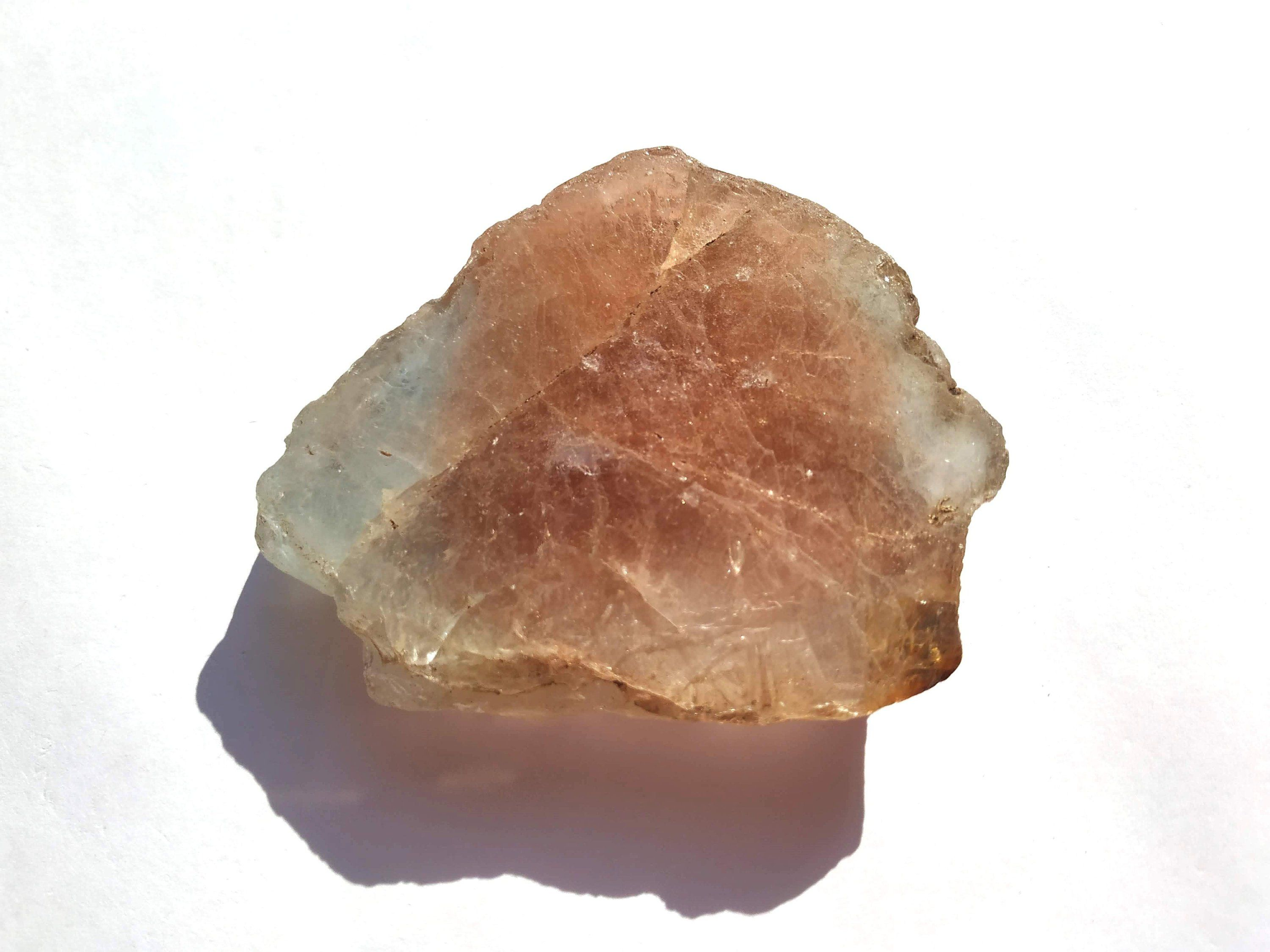
Raw Imperial Topaz (Source: Pinterest)
Topaz is an allochromatic gemstone-quality crystal. This means its colour is caused by elemental impurities or structural defects. Therefore, a Topaz can come in a wide range of colours.
At its purest, Topaz is colourless. However, the presence of aluminium makes it look golden brown or yellow when it is found in nature. Chromium in Topaz produces a range of pink to purple colours. Colourless Topaz is usually irradiated to make it blue.
Topaz also exhibits pleochroism—exposed to different light conditions, a Topaz gemstone can radiate varying shades and intensities.
Where Citrine is Mined
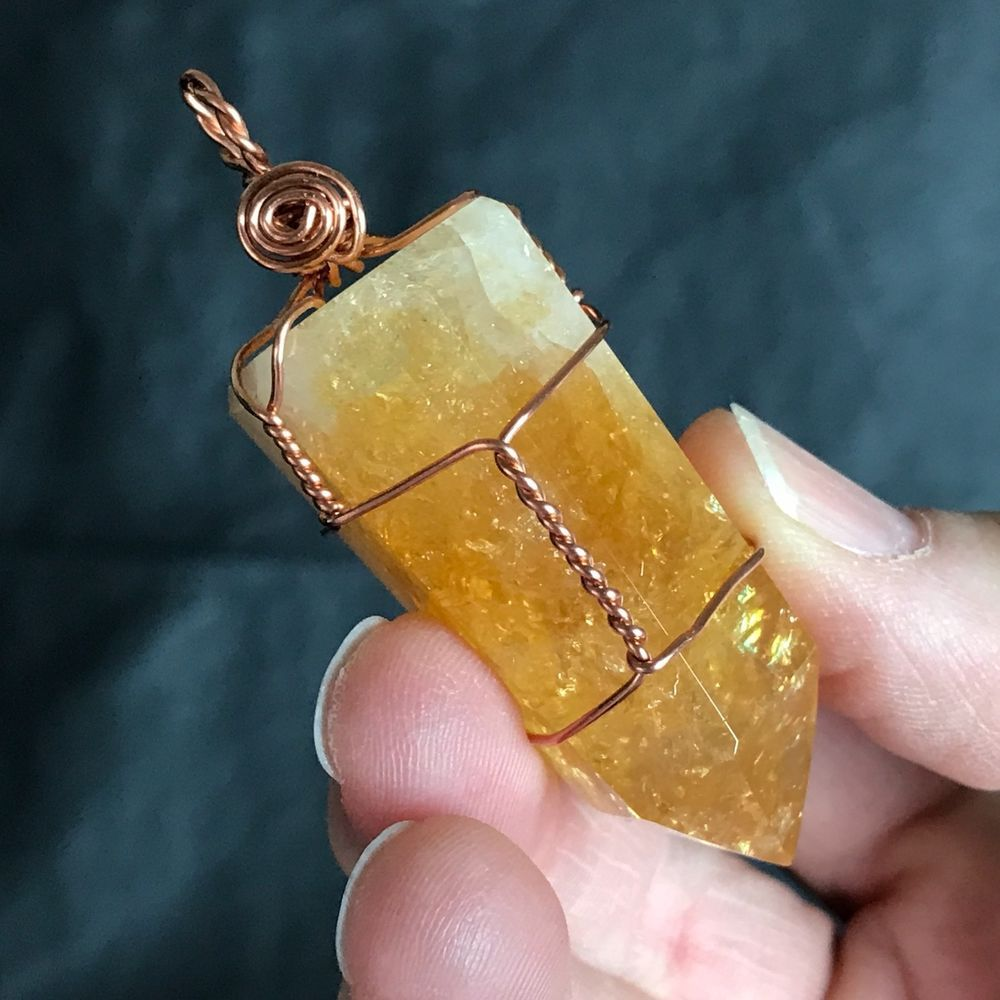
Brazilian Citrine Pendant (Source: Pinterest)
Brazil is the main source of natural Citrine. Citrine gemstones sourced in Brazil are also sometimes mistakenly referred to as Brazilian Topaz.
Argentina, Bolivia, Peru, and Uruguay are the other South American nations that reliably produce Citrine. Up in North America, Mexico and the Ontario Gem Mine in Canada are mined for Citrine.
In Africa, Citrine is mined in Namibia, Zambia, Zaire, Madagascar, the Democratic Republic of Congo, and South Africa.
Spain and Russia represent Europe for Citrine mining, while Myanmar and Sri Lanka represent Asia.
Where Topaz is Mined
Brazil maintains its reputation for producing high-quality gemstones with its remarkable Topaz output.
The Ural mountains of Russia were once the biggest source of Topaz in the world back in the 1800s. The region earned its fame for its brilliant pink and orange-red gemstones, which were dubbed Imperial Topazes.
Stretching from the Eurasian and Middle Eastern region to the borders of South Asia, Topaz can be found in Ukraine, Afghanistan, Tajikistan, Kazakhstan, and Pakistan. India and Sri Lanka also have Topaz deposits.
Further east, Myanmar, Vietnam, China, Japan, and Australia produce Topaz as well. In Africa, Topaz is mined in Madagascar, Nigeria, and Zimbabwe.
Mexico, Canada, and the US are the Americas’ Topaz sources.
The History and Significance of Citrine
Citrine has been used for jewellery since antiquity. The Greeks during the Hellenistic period cut Citrine for intaglios (a gem with an incised design), with the Ancient Romans following suit.
The gemstone wasn’t actually called Citrine until 1556. Before it was named after the citron fruit, it was simply referred to as yellow quartz. Even so, gemmology then had yet to advance into a rigorous study, and Citrine was usually lumped in with yellow-brown Topaz.
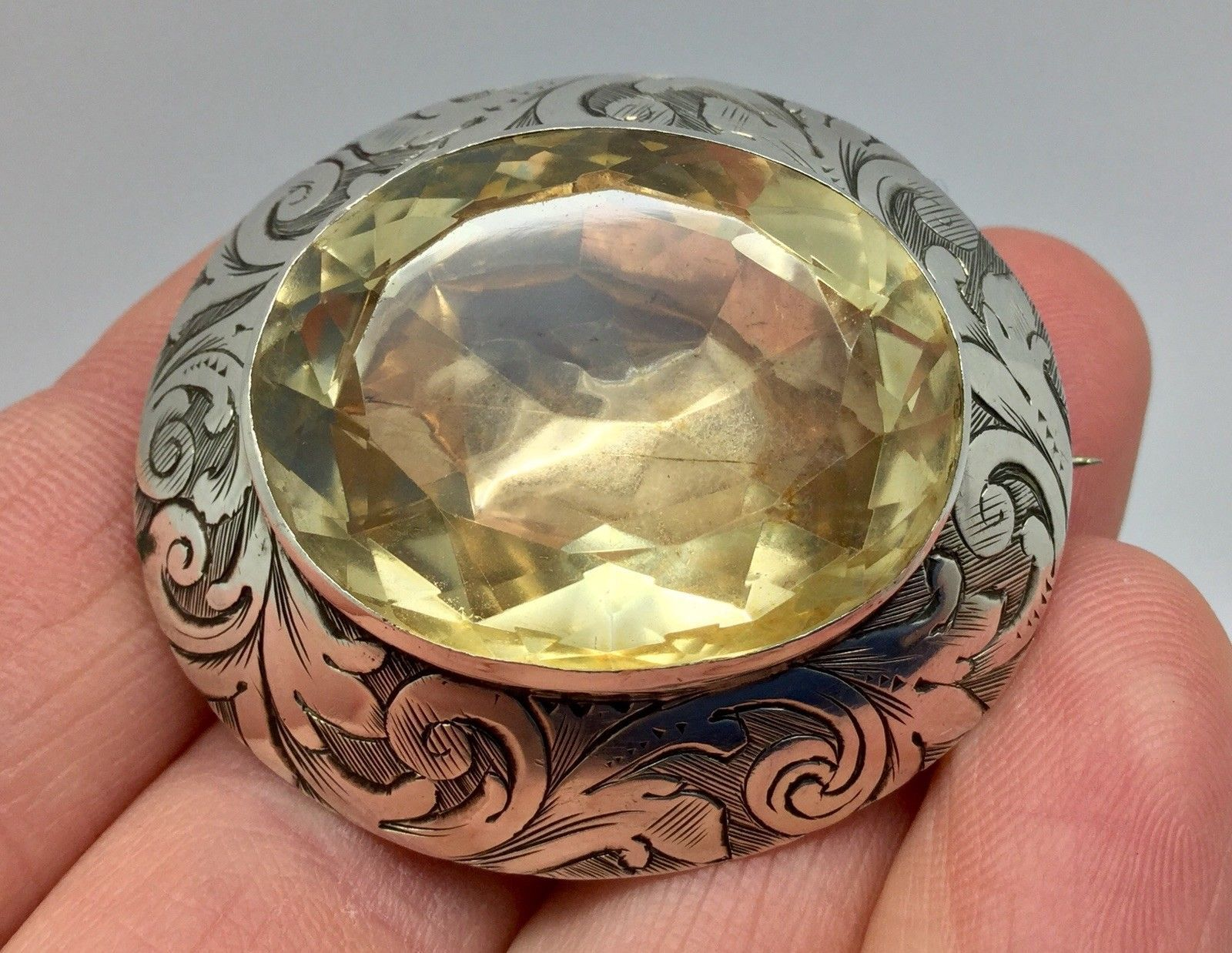
Antique Scottish Citrine brooch (Source: Pinterest)
Meanwhile, throughout the Renaissance, Scottish craftsmen made decorative sword and dagger handles with Citrine.
The popularity of Citrine grew alongside the influence of Hollywood in the early 20th century. The budding industry’s silver-screen stars made Citrines highly fashionable throughout the Art Deco era.
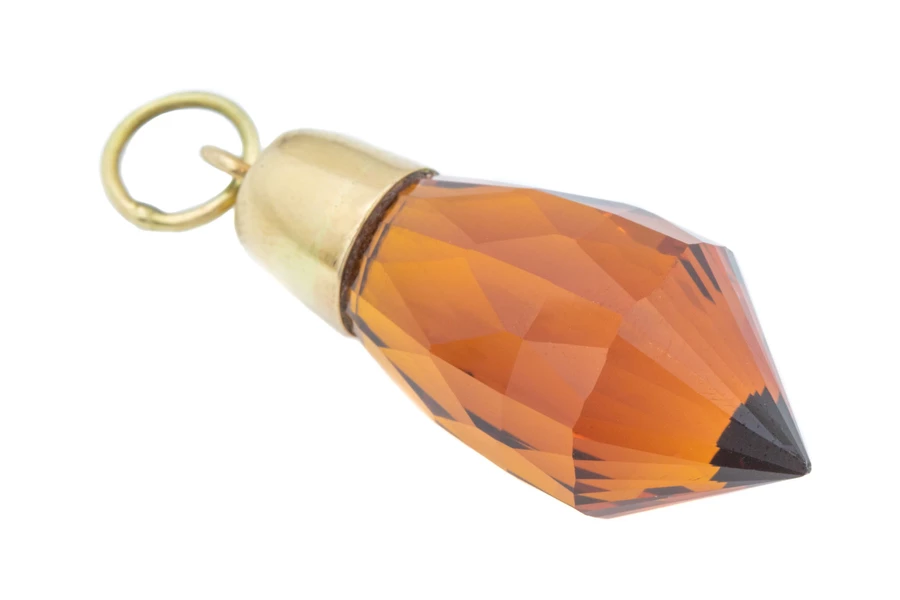
14ct Gold Art Deco Citrine briolette pendant (Source: Lillicoco)
Citrine has become one of the more common gemstones in modern times, but it is still valued for its signature yellow shine and supposed cleansing powers.
The History and Significance of Topaz

Georgian 15ct Gold Topaz cross pendant (Source: Lillicoco)
The word “Topaz” is derived from the Ancient Greek word “Topazios” or “Topazos.” The Ancient Greeks mythologised what is now known as St. John’s Island in the Red Sea for its yellow gemstones. However, these stones are recognised today as Peridots, not Topazes.
Still, the Greeks and, in turn, the Romans called most yellow, brown, and orange gemstones Topazes and placed importance in these stones.
Topaz is sacred in Hindu mythology. It is integral to the holy Kalpa tree, and is believed to energise and imbue wisdom to those who wear it as a pendant.
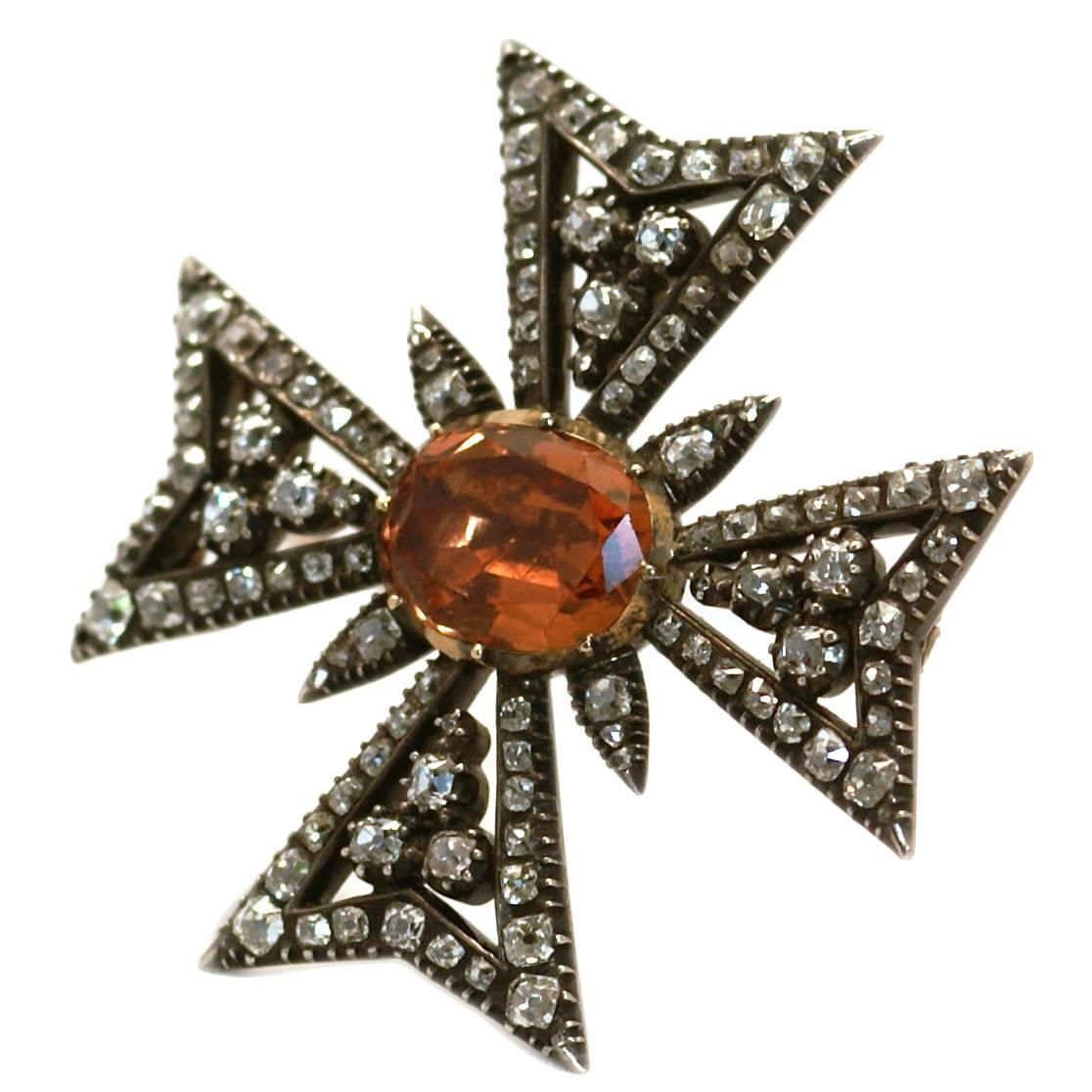
Antique Imperial Topaz and Diamond brooch (Source: 1stdibs)
Europeans in the Middle Ages, meanwhile, treasured Topaz for its perceived ability to break spells and diffuse tension.
The Russian Tsars of the 19th century had exclusive access to the Imperial Topaz from the Urals. However, the discovery of bountiful Topaz deposits in Brazil eventually made Topaz more common, and it is now widely available to the average jewellery enthusiast.
General Tips on Buying and Maintaining Citrine and Topaz 
Blue Topaz Art Deco ring (Source: Pinterest)
As it goes with evaluating gemstones for jewellery, Citrine and Topaz are judged by the four C’s: colour, clarity, cut, and carat.
1. Colour
The most valuable Citrines have stark, saturated yellows or reddish-orange colours. Brown tints devalue a Citrine. While brownish-yellow Citrines can be beautiful, they do not have the same value as authentic Topazes of a similar colour. Beware of being sold a Topaz with a high price tag that is actually a Citrine (which can then be bought at a more affordable rate).
Meanwhile, Topaz comes in all sorts of colours. Blue and brown are currently the most common options. Pink and reddish-orange Topazes, usually of the Imperial variety, are the most expensive.
2. Clarity
For the general gemstone consumer, both Citrine and Topaz should be eye-clean when buying them. This means no inclusions (cracks or hairline fissures) should be visible upon inspection without any tools or expertise.
3. Cut
Citrine is fine in just about any standard cut, although it is quite popular in oval or pear shapes for pendants. Topaz is typically cut in elongated forms to optimise the rough, especially for stones with deep colours. Customised cuts are also available for Topaz jewellery.
4. Carat
Citrine and Topaz are more expensive the higher the carat. Big pieces are accessible to general consumers, although Topaz jewellery have more significant price jumps the larger the stone.
Maintaining Citrine and Topaz Jewellery
Although Citrine only has a Mohs hardness rating of 7, it is durable when cut for jewellery. Such pieces don’t require special attention, apart from keeping them separate from harder gemstones. Because most Citrine in jewellery has been heat-treated, do not expose them to high temperatures. Opt for ultrasonic or mild soap cleaning instead of steam cleaning.
Topaz has an 8 Mohs rating, making it durable for casual wear. However, it can be chipped or damaged upon impact. Do not use mechanical cleaning methods. Hand wash your pieces with mild soap and water.
Add a touch of firey warmth to your antique jewellery collection with our antique Citrine jewellery and antique Topaz jewellery.





